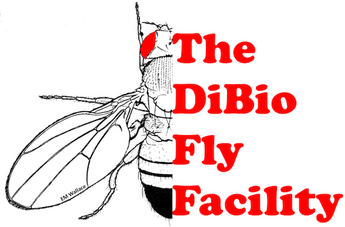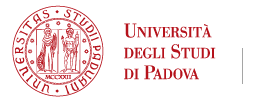
SPOTLIGHT: Drosophila facility
Pubblicato il: 05.05.2020 17:00
The Department of Biology (DiBio, University of Padova) Fly Facility has the aim of promoting the use of Drosophila melanogaster as a model organism in research and teaching. The advantages offered by this organism are numerous, among which the possibility of maintaining large numbers of stocks at a low cost, the generally high fertility (200 eggs/female/day), the short generation time (the egg-to-adult cycle lasts about 12 days at 25o C). Drosophila has been, and often is still the organism of choice for research in biology and biomedicine, mainly for the following reasons: (i) The virtually non-redundant Drosophila genome facilitates functional studies of genes of interest; (ii) Approximately 75% of human disease-related genes possess a Drosophila homologue; (iii) From the evolutionary point of view, basic biological processes are conserved, not only at the cellular, but also at the systems level, including the general structure and functions of the central nervous system; (iv) Many molecular/genetic tools have been developed, allowing the manipulation of the spatial/temporal expression of specific transgenes, the knock-down of specific gene products (via RNAi) or the deletion/mutation of single target genes (by means of CRISPR/Cas9 technology); (v) A number of stock collections are available at stock centers such as the Bloomington Drosophila Stock Center (BDSC), the Harvard Medical School Exelixis Collection, and the Janelia Research Campus collection, each hosting a large number of transgenic and/or mutant Drosophila lines; (vi) Furthermore, "kits" of lines with which to perform RNAi, based on the UAS/GAL4 binary system, are available, for example, at the Vienna Drosophila RNAi center (VDRC), the NIG-FLY (National Institutes of Genetics, Japan) and the Harvard Medical School TRiP (Transgenic RNAi project).
Management of Drosophila lines: The DiBio Fly Facility is host to a number of basic line "kits" such as a series of balancers (with morphological and/or GFP markers) for the major chromosomes, as well as transgenic lines such as some of the most commonly employed driver lines used to drive the expression of GAL4 in temporally and/or spatially controlled patterns.
In addition we can offer assistance in selecting and ordering, Drosophila mutants, transgenic lines, lines with which to perform RNAi, or any other lines of general utility from external repository services (such as Bloomington, Harvard, VDRC, NIG-Fly Japan).
The Fly Facility can provide for the maintenance, under optimal controlled conditions, of "private" Drosophila strains. This may be useful for research groups which possess unique Drosophila strains (i.e. strains which are not available in the standard international stock centers).
Equipment:The DiBio Fly Facility can rely on:
2 Drosophila CO2 anaesthesia stations equipped with dissection stereo microscopes; A local computer network with PCs with software dedicated to image analysis and digital data analysis; 3 walk-in thermostatic rooms of which one, constantly kept at 18o C for the long term maintenance of Drosophila lines, the other two being available for the conduction of experiments under controlled environmental conditions; Modular computerised equipment for the long term acquisition of daily locomotor activity and sleep-wake cycles; High resolution digital videocamera, dedicated computer and specific software for the detailed analyses of Drosophila larval and/or adult behaviour.
Advice and experimental design:The DiBio Fly Facility can provide support/advice in planning and performing experiments which require the use of Drosophila. In particular, requests can be directed to the Facility to prepare specific crosses for the genetic manipulation of Drosophila lines, i.e. for genetic background homogenization; for the reconstitution of binary/ternary systems (i.e. GAL4/UAS, including modulation by GAL80); for the activation of tissue-specific and/or temporally controlled RNAi; for tissue-specific and/or temporally controlled staining of tissues (i.e. GAL4/UAS controlled GFP expression). Aside from the evaluation of numerous behavioural end-points, on request the Fly Facility personnel is open to discuss the possibility of performing experiments which may, for example, require the determination of biochemical parameters (i.e. related to mitochondrial function), genomic-level analyses (i.e. RNA expression profiles), or the setting up of preparations for immuno (cyto- or histo-) chemical analyses.
Staff members & Scientific Committee:Mauro Zordan, Federica Sandrelli, Cristiano De Pitta’, Gabriella Mazzotta, Paola Cisotto, Paola Cusumano, Rodolfo Costa, Marco Bisaglia, Elena Ziviani, Aram Megighian.





